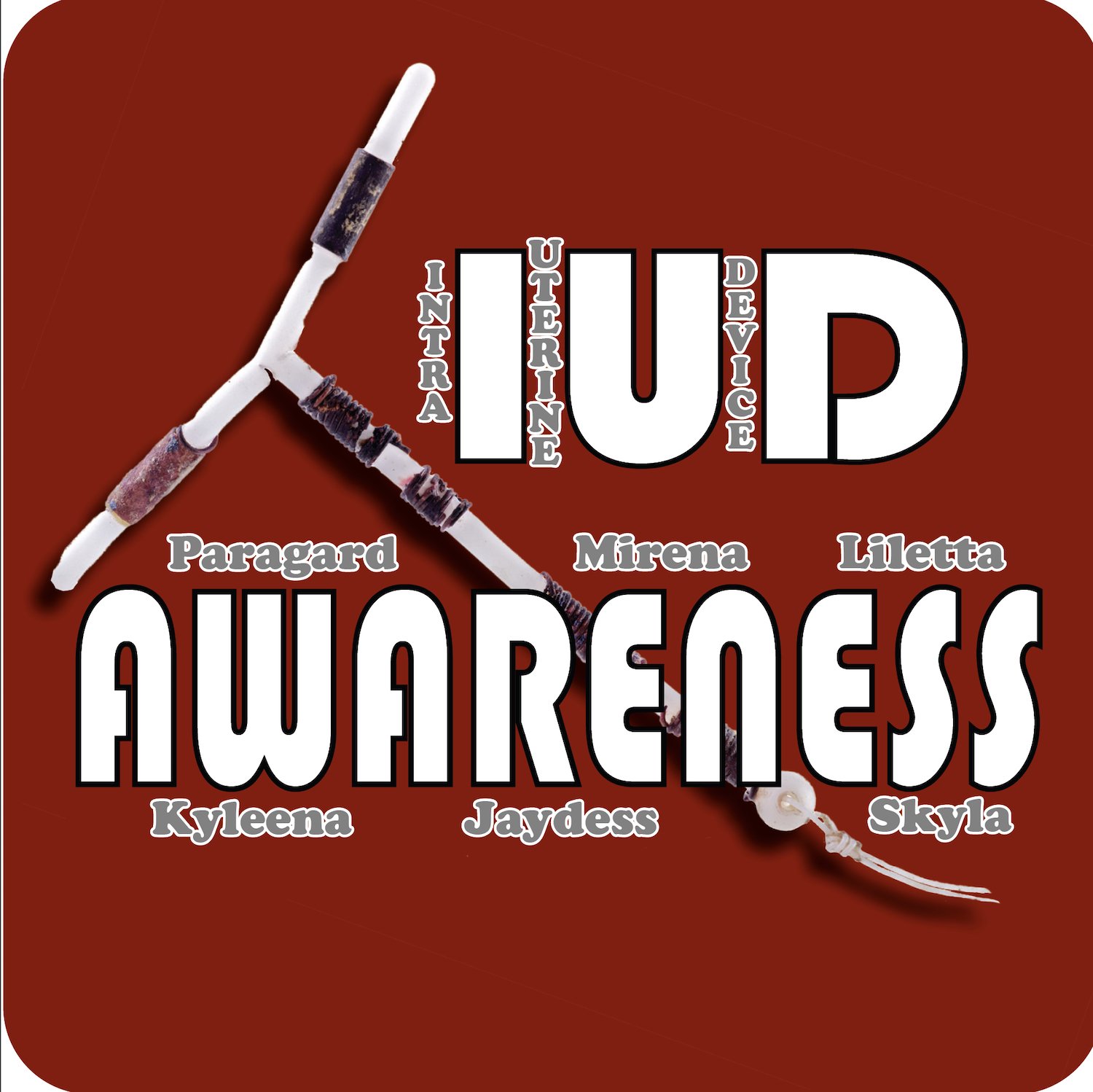IUD Removal Panel at International Symposium
/LIVESTREAM: May 28, 2020
Sixth International Symposium on IUDs
PANEL 1
IUD REMOVAL
(Day 1, Part 2 of 7 Day Series)
Desire for Control over IUD Removal
with Diana Greene Foster, PhD
“Nearly half of IUD users surveyed say that control over stopping use of a contraceptive is the most important characteristic in choosing a contraceptive device.
African American contraceptive users with less secure access to clinicians and health insurance and users with lower trust in providers may particularly like control over stopping. IUDs and implants are cost-effective overall even under real world conditions where some users discontinue prematurely. “
Q & A
Q: In the 2014 paper, only 59% willing to try self-removal and then 19% successful is low. How do you see self-removal fitting into wider removal services?
A: Not all women will be interested in removing their own IUDs. The clinician placing the IUD has to ask the woman if she might be interested in self-removing the device later. If she does not like the idea or if she has concerns about a partner removing her IUD against her will, then the provider can trim the strings short. If she is interested in self-removal, the clinician can trim the strings 2 inches (5cm) or longer from the external os.
Q: If IUD strings are left long (5-7 cm), is there higher incidence of accidental removal or partial expulsions, from tampon use or perhaps sex?
A: There aren’t hard data on this but it seems reasonable to assume that there is a higher risk of accidental removal with longer strings. This may be a trade off the woman is willing to make in order to have control over removal. Women who want to use a menstrual cup, who don’t trust their partner not to remove it, or who are sure that they want to use the method for a long time may prefer to have shorter strings. Women who want control over discontinuation may want longer strings.
Q: How long does the string need to be to be successfully removed?
A: More work should be done on this. Based on our data, 2 inches (5 cm) from the external os may be long enough for successful removal.
Q: Why was the third position, with a person standing with one leg up on a step, less successful for self-removal?
A: I don’t know why one foot up was less successful. Note that the trial occurred inside a clinic. At home, a woman could try a variety of positions until she finds one where her ability to grasp the string is greatest.
Q: For patients whose strings are left longer, has any qualitative data been collected rated to “bothersome strings” (reported by patient or partner)?
A: I am not familiar with the complete literature on IUD complaints. Anecdotally, I know that both long strings and short strings can be bothersome. One can feel long strings but short strings can poke. Short strings also can retreat into the cervix and require a more painful removal process. Only the woman would know which she prefers.
Q: What were the characteristics of self removal failure? Were most partially removed, trapped in cervical canal? If partially removed this could potentially decrease efficacy of the method until the pt is able to obtain an appointment for removal or transition to another method.
A: In our trial, nobody partially removed their IUD. (This was not a concern in Dr. Amico’s data either.) All the failures to self-removal involved women who were not able to grasp the string and therefore could not pull on it.
Questions for both
Dr. Foster and Dr. Amico
Q: Do you have any concerns about self-removal, especially in the LMIC context or areas where STI and other vaginal infections may be high. In addition, is there any concern that the removal appointment is an important opportunity for provider contact and self-removal would remove that opportunity for healthcare provisions for other issues
A: Amico: I do not have any concerns about uterine infection resulting in self-removal attempts. This was not mentioned in the data as an outcome. Also, since self-removal (and provider-removal) does not require instrumentation into the cervix at all, this clinically would not be a concern.
A: Amico and Foster: We need to keep in mind that people can discontinue most other reversible contraceptives without seeing a clinician first. Self-removal simply makes IUD discontinuation as accessible as discontinuation of short acting methods. Requiring a visit for IUD discontinuation is like requiring a pap for an oral contraceptives prescription or an IUD insertion: while ideally people will have cervical cancer screening and access to information about effective contraception, it does not make sense to hold one service hostage in order to access another.
IUD Removal Access and Obstacles
with Jennifer R Amico, MD, MPH
“IUD self-removal can be quick, easy, and painless if strings are graspable, with no evidence of complications. Providers can support self-removal by providing advice and guidance about safe techniques and when to seek care as well as resources for family planning post-removal. Evidence from this study suggests that string length should be discussed when IUD is placed to ensure that the user understands the value and limitation of long or short strings so that preferences can be taken into account.”
Q & A
Q: Can you talk more about why patients felt that self-removal would be a risk for coercion?
A: In our study, both patients and providers were concerned that someone else in an IUD user’s life, such as their partner, would remove the IUD without their consent.
Q: In your qualitative study, did you find providers who were okay with removing IUDs on request? You only presented providers who expressed concerns. Was that the totality of the sample?
A: Thank you for this question. In our sample of 16 patients, 9 had reported that their providers gave them the option to keep or remove the IUD, while the other 7 only reported that their provider encouraged continuation. Of those 9 who offered either option, only 3 were perceived by the patient as being neutral about it, with the other 6 clearly preferring IUD continuation.
In our sample of 12 providers, no one reported that they removed IUDs on request without giving a recommendation to keep it, everyone spoke about being conflicted and favoring continuation when possible.
Of course, please keep in mind that this breakdown is not meant to be evidence of a quantitative outcome, but only to give context to the data.
Q: Are there any regulatory or other risks to providers for supporting self-removal of IUDs?
A: This is a great question and one that is worth thinking about. I think it is fair to tell people what we know about self-removal as well as the limitations of what we know, without medical-legal trouble.
Q: Would you recommend self-removal during menses?
A: While the people in our data set recommended self-removal during menses, many people removed not during menses. We don’t have quantitative data to say that attempting removal during menses is more effective or more comfortable. Given what we know about IUD insertion (that insertion during menses might be helpful or more comfortable, but not required), giving that same recommendation regarding timing is probably fair.
Q: Any Information on IUD type in the position/data collected in your study with Dr. Stimmel?
A: We did not extract the data about which IUD (when that was offered) to look at any differences with respect to positions or outcomes of self-removal attempts.
Q: Can you go into the risk of expulsion during the use of menstrual cups?
A: There have certainly been reports of IUD expulsion caused by removal of menstrual cups. In a study looking at expulsion rates among people using different menstrual products (pads, tampons, menstrual cups) there was no statistical difference in expulsion between users of these products (Wiebe and Trouton, Contraception, 2012).
Because the suction created by menstrual cups, a colleague suggested to me that menstrual cups could be recommended for self-removal, but this has not yet been explored as far as I know.
A: (from David Hubacher) Some research suggests there may be an association. See recent ACOG abstract
Q: Is there any pushback from providers to counsel patients about self-removal since they would lose a billable visit for IUD removal?
A: The providers in our study were residency faculty practicing at an FQHC in the Bronx, and this was not a common concern with them. However, I can imagine this being more of a concern with providers in different settings.
Questions for both
Dr. Amico and Dr. Foster
Q: Do you have any concerns about self-removal, especially in the LMIC context or areas where STI and other vaginal infections may be high. In addition, is there any concern that the removal appointment is an important opportunity for provider contact and self-removal would remove that opportunity for healthcare provisions for other issues ?
A: Amico: I do not have any concerns about uterine infection resulting in self-removal attempts. This was not mentioned in the data as an outcome. Also, since self-removal (and provider-removal) does not require instrumentation into the cervix at all, this clinically would not be a concern.
A: Amico and Foster: We need to keep in mind that people can discontinue most other reversible contraceptives without seeing a clinician first. Self-removal simply makes IUD discontinuation as accessible as discontinuation of short acting methods. Requiring a visit for IUD discontinuation is like requiring a pap for an oral contraceptives prescription or an IUD insertion: while ideally people will have cervical cancer screening and access to information about effective contraception, it does not make sense to hold one service hostage in order to access another.
Supporters Include Makers of Many IUD Brands:
Bayer Health Care
(Mirena, Skyla & Kyleena)Mona Lisa
(Mona Lisa)Medicines 360
(Liletta)Cooper Surgical
(Paragard)






































December 9, 2020
iud2020 - Day 3